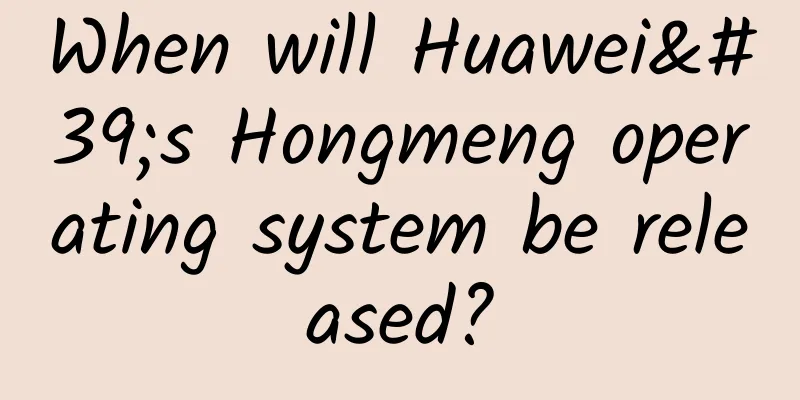iPhone drives up the average price of Chinese mobile phones: a blessing or a curse for China’s mobile phone industry?

|
Recently, Creative Strategies, an American market research company, said that since Apple launched iPhone 6 and iPhone 6 Plus in the Chinese market, the average selling price of Chinese smartphones has increased by nearly 40%. So what does this phenomenon reflect about the competitive situation of China's mobile phone industry? What impact will it have on China's mobile phone industry in the future? Here we might as well take a look at what has happened in the Chinese mobile phone industry since the launch of Apple iPhone 6 and iPhone 6 Plus. Of course, here we only select the events that we think are more important in the industry. The most typical one is the disintegration of the traditional "China Cool Union" and the change of strategy in the Chinese smartphone industry. Lenovo caused an uproar in the industry because of the sudden replacement of Liu Jun, the mobile boss, and Coolpad successively sold its Dasheng brand and Coolpad to Chinese Internet companies 360 and LeTV in the form of cooperative share sales (also indicating that it will fade out of the smartphone business). The main reason is that Lenovo and Coolpad performed poorly in the smartphone market. For example, Lenovo's smartphone shipments fell sharply in the first quarter of this year, and Coolpad was under great pressure on revenue and profit due to its excessive efforts in 4G thousand-yuan phones last year. As for ZTE, it had fallen out of the first camp in the Chinese smartphone market as early as last year. This year, it began to focus on the so-called Internet brands, such as the independence of the Nubia brand before. Speaking of Internet brands, the traditional "China Cool Alliance" has launched its own Internet brands, but except for Huawei's "Honor", which is relatively successful, the others are in the layout stage. Even so, Coolpad's Internet brand "Dashen" only lasted less than half a year after it announced its independence before it was acquired by 360 and became a product of Qihoo. Of course, these traditional mobile phone manufacturers launched Internet brand mobile phones and even became independent in order to comply with the development trend of China's smartphone industry (such as Internet thinking to make products and e-commerce as the main channel), and more importantly, to reduce operating costs in order to cope with fierce market competition, which mainly comes from Internet companies like Xiaomi. So the next question is, why do companies like Xiaomi threaten the survival and development of traditional mobile phone companies? With a little observation and analysis, it is not difficult to find that these Internet companies that threaten traditional mobile phone companies, whether it is the current Xiaomi, or the future 360 or LeTV, all use ecology (ecosystem) as a gimmick, and their final performance in the smartphone market is to sell smartphones at cost price, or even at a loss. This approach naturally puts pressure on traditional mobile phone companies, and then continues to lower the price of smartphones in the Chinese market. But everyone knows that it takes a considerable amount of time and is unpredictable to build a complete ecosystem until it generates actual value. From this point of view, the current Chinese Internet companies sell mobile phones at cost price or at a loss more to win the favor of the capital market (continuously obtain financing and improve the valuation of their own companies). However, if this model becomes the main theme of China's mobile phone industry and is imitated by traditional mobile phone companies (for example, the independent Magic Factory established by Lenovo last year is modeled after Xiaomi's model, at least under the banner of not making money from mobile phone hardware but playing with software), then the price of China's smartphone industry will continue to fall in the future, and profits will continue to be compressed. At this point, some people may ask why Chinese mobile phone companies (including traditional and Internet) have fallen into the above-mentioned low-price and even vicious competition model. In fact, as early as last year, traditional mobile phone companies clearly stated that they would no longer focus on low-end phones, but would focus on mid-to-high-end phones as the development center. However, due to the general lack of core technology and innovation among Chinese mobile phone companies, homogeneous competition is serious. Once a company offers a low price, it will immediately show its true colors in terms of market share. The most typical example is Xiaomi's surge in shipments in the smartphone market last year thanks to the low-priced Redmi phone. The hot sales of Apple's iPhone 6 and iPhone 6 Plus at the end of the year completely shattered the high-end dreams of traditional mobile phone companies, and the newly entered Internet companies also have no differentiated advantages (referring to smartphone hardware), but compared with traditional mobile phone companies, they still have the so-called ecological gimmick and the only remaining way to enter the smartphone market is lower prices, which is the most effective way. In summary, the Chinese smartphone industry has been in a low-price, low-value competition mode. According to data released by market research company IDC, in the third quarter of 2014, the average selling price of smartphones in China was only $192, but by the third quarter of 2015 it had risen to $263, a 37% increase. However, the price after the increase is still lower than the global average of $297. It can be seen that price wars have always been the norm for competition and development in China's smartphone industry, and the hot sales or high prices of Apple's iPhone 6 and iPhone 6 Plus have played a catalyst role. Of course, this catalyst is not to boost the price of Chinese mobile phone companies, but to make this low-price, low-value model more and more intense this year. In addition to the above-mentioned changes in traditional mobile phone companies and the involvement of Internet companies this year, the recent competition among manufacturers to release 1,000-yuan phones and even the emergence of 399-yuan smartphones are all good proofs. So although Apple's iPhone has raised the average price of smartphones in the Chinese smartphone market, it is actually the sadness of the Chinese smartphone industry behind it. As a winner of Toutiao's Qingyun Plan and Baijiahao's Bai+ Plan, the 2019 Baidu Digital Author of the Year, the Baijiahao's Most Popular Author in the Technology Field, the 2019 Sogou Technology and Culture Author, and the 2021 Baijiahao Quarterly Influential Creator, he has won many awards, including the 2013 Sohu Best Industry Media Person, the 2015 China New Media Entrepreneurship Competition Beijing Third Place, the 2015 Guangmang Experience Award, the 2015 China New Media Entrepreneurship Competition Finals Third Place, and the 2018 Baidu Dynamic Annual Powerful Celebrity. |
>>: 360 LeTV uses Coolpad to balance Xiaomi?
Recommend
Toyota and SoftBank join forces to usher in an era of cooperation between water and oil for autonomous driving
The Nikkei reported on November 27 that Toyota Mo...
Do you like to hoard things and can't bear to throw them away? This may be a disease...
Hoarding behavior is widely observed in various a...
How to use Baidu experience for online promotion?
We all know that there are many ways of online pr...
More practical APP ranking optimization methods and techniques
In recent years, it is not uncommon to see apps t...
Bitcoin has risen from 8,000 to over 100,000 this year. Who is "speculating like crazy"?
I once had a pile of bitcoins in front of me, but...
World Allergy Day | Contemporary “allergy crisis”: Why are our bodies becoming more and more sensitive?
Today is World Allergy Day. Every year on July 8,...
Why do the mild-mannered Asian carp dominate the world in the United States? How terrible are biological invasions?
The carp mentioned here, also called Asian carp, ...
8 promotion and monetization techniques, which one do you pick?
Today I will share with you the 8 most common mon...
How much does water cost per ton for residents? How much does water cost per ton in 2020?
Is the water fee set by the state, or is it set b...
Baidu screen domination quick ranking detailed practical experience, keyword interception screen domination, achieve explosive drainage, even novices can get started
2021 Baidu screen domination fast ranking detaile...
Zhihu advertising, Zhi+ account opening guide!
Each platform has its own advertising management ...
Why would the live streaming room for selling goods be blocked? What's the violation?
“Why can’t the product be put on the shelves?” “W...
Liu Zhihui, Quantitative Learning Cloud Lecture Hall, "Quantitative Learning to Understand the Market and Ambush the Daily Limit" 34th issue
Liu Zhihui's Quantitative Learning Cloud Lect...
Tencent technical tips! How to make a terrifying HTML5 page
The whole text is full of valuable information an...
December 2021 "Science" Rumor List: Does nuclear heating have radiation?
Does nuclear heating have radiation? The more nat...









